Audio available in app
Mirror box therapy can help amputees regain motor function in phantom limbs from "summary" of Phantoms in the Brain by V. S. Ramachandran
Mirror box therapy is a groundbreaking technique that has shown remarkable results in helping amputees regain motor function in their phantom limbs. This therapy involves the use of a simple device - a box with a mirror in the center - that allows the patient to see a reflection of their intact limb where their missing limb would be. By watching the reflection of their intact limb moving, the brain is tricked into believing that the missing limb is also moving in a similar way. This visual feedback helps to alleviate the sensation of paralysis or pain in the phantom limb. The brain is a complex organ that is capable of rewiring itself in response to changes in inputs. When an amputation occurs, the brain's representation of the missing limb does not simply disappear. Instead, it continues to send signals to the limb, leading to the sensation of a phantom limb. This phenomenon can be distressing for amputees, as they may experience pain, tingling, or itching in a limb that no longer exists. Mirror box therapy works by providing the brain with visual feedback that contradicts the signals it is receiving from the phantom limb. By seeing the intact limb moving in the mirror, the brain is able to reconcile the conflicting information and gradually reorganize its neural pathways. Over time, this can lead to a reduction in pain and an improvement in motor function in the phantom limb. The success of mirror box therapy highlights the brain's remarkable ability to adapt and change in response to new stimuli. By harnessing the brain's plasticity, amputees are able to retrain their neural circuits and regain control over their phantom limbs. This therapy not only offers physical benefits but can also have a profound impact on the psychological well-being of amputees, allowing them to reclaim a sense of agency and control over their bodies.- Mirror box therapy represents a powerful tool in the treatment of phantom limb pain and dysfunction. By providing the brain with visual feedback that contradicts the signals it is receiving from the phantom limb, this therapy can help amputees regain motor function and alleviate pain in their missing limbs. The success of this technique underscores the brain's remarkable plasticity and ability to adapt to new circumstances, offering hope and relief to amputees struggling with the challenges of phantom limbs.


